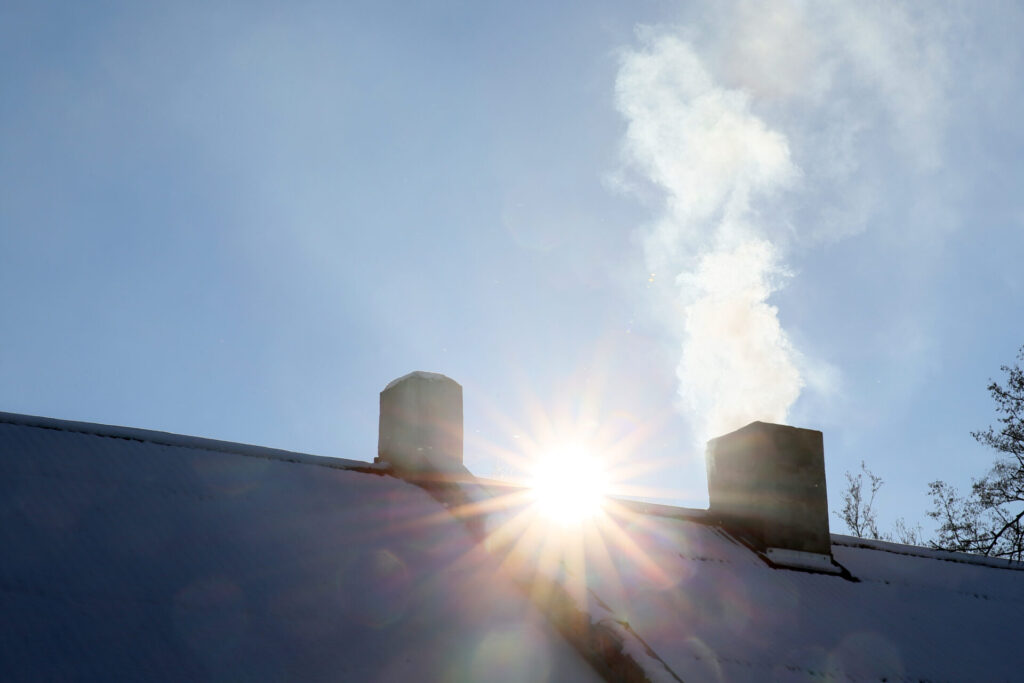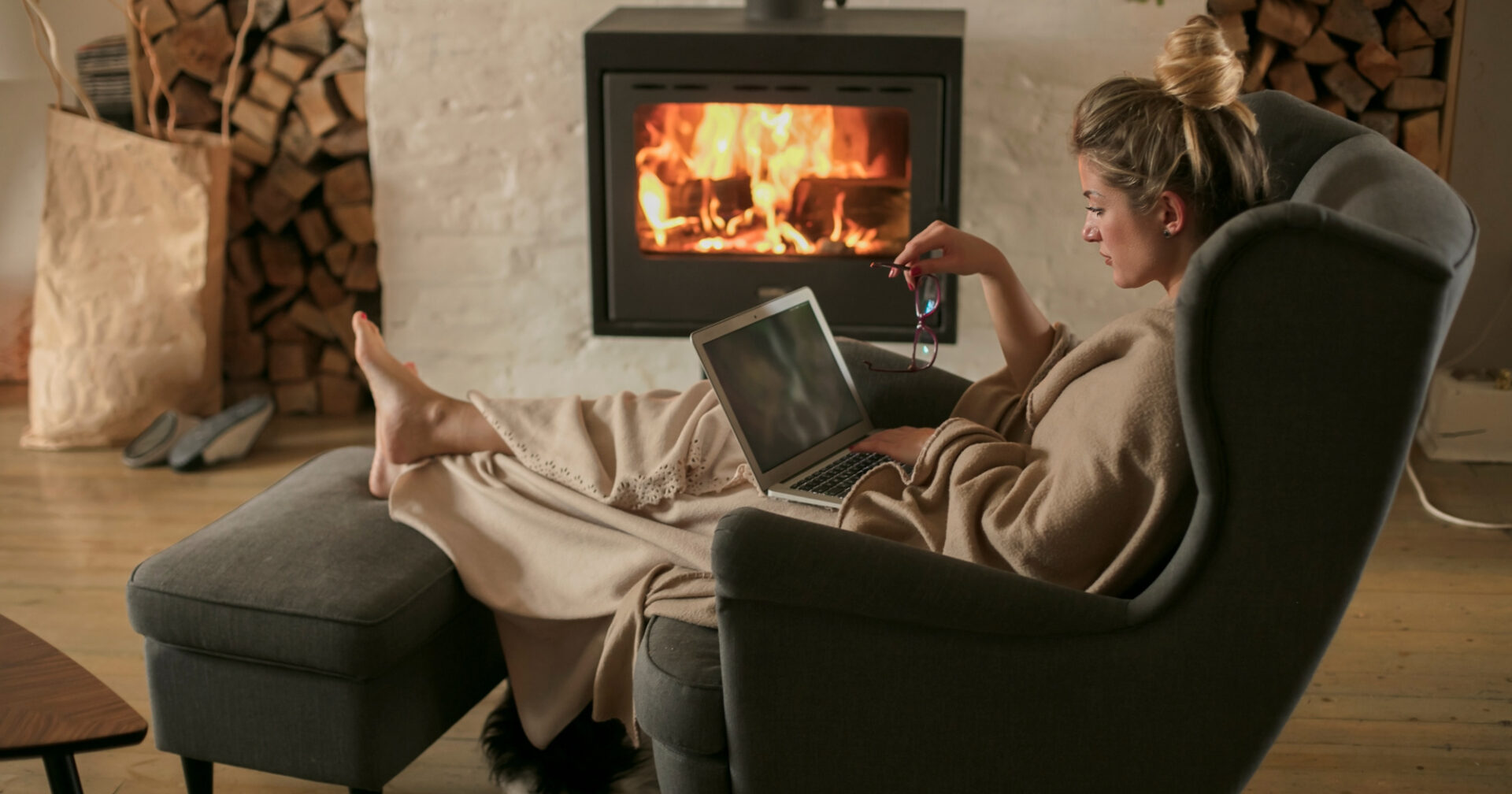Now, the cold is upon us again, and with it increased wood burning. As NILU also points out, wood burning can be a notable source of small particles emissions – especially from older stoves. These emissions contribute to reducing the air quality, especially in larger cities.
The importance of using the stove correctly during home office use
Being at home more means the need for heat is greater. This makes it all the more important to use your stove in a way that minimises particle emissions. If you do things right, you can reduce particle emissions by 50% to 80%. A key point is to give the flame the correct amount of air, as explained in this video:
Use the stove as often as possible at its “nominal load”. What the nominal load is for your particular stove is explained under “technical information” in your stove’s installation and operation manual – a document which is carefully thought out by the manufacturer. It is written to make it possible for you the consumer to use the product in the best possible way. If your manual has been lost, contact the manufacturer to get a new one. Nominal load is the load at which the stove gives its best results, both in terms of particle emissions, carbon monoxide emissions and efficiency. The big question is how do you as a user regulate the air intake to allow the stove to perform at its nominal load (as well as possible, in other words). The most telling sign of optimal combustion is the colour of the flame: it should be light-coloured and have blue tones close to the wood (see the video above). The flames should not be filling the whole combustion chamber.
Another important tip is to light up from the top. This also contributes to reducing particle emissions considerably. See our video explanation:
The relative contribution of wood-burning to total particle emissions can be expected to increase this winter, since Covid-19 will continue to impact traffic for a while. But being home more and working from home will obviously mean existing wood stoves will be used more, with the increase in emissions that follows. That being said, there would need to be a lot more wood burning going on than normal to reach the total emissions levels of a normal year.
Particle emissions go down by 50% to 80% if you use your stove properly
In addition to normal maintenance and sweeping of your stove and chimney, there is a lot more you can do to minimise particle emissions from your stove:
- If your stove is old – even if it is a cherished one – replace it with a modern, clean-burning stove with lowest emissions
- If you have an open hearth fireplace, don’t use it more than for short periods for ambiance. We recommend fitting a modern, clean-burning fireplace insert instead.
- Follow the stove’s operation manual when it comes to placement of the wood and adjustment of the air supply
- Use dry wood and avoid newspapers for lighting up. Use bark, wood chips and firelighters instead
- Light up from the top: it reduces particle emissions
- Don’t choke the flame (people sometimes do this – reducing the air supply – to allow the fire to burn longer)
- When you have embers going, it’s better to add small amounts of wood (one piece at a time) more often than to add lots at a time. This will result in more stable operating conditions, a more stable heat output and lower emissions

If old stoves are replaced with new ones, and if everyone uses them correctly, wood burning’s contribution to the total emissions of particles will go down sharply – while allowing homeowners to enjoy the timeless cosiness of a wood fire.
Incentives
In many jurisdictions, authorities have put into place incentives to encourage homeowners to replace their old, inefficient stoves. Contact your local council to ask if such programs exist in your area!
In Norway, the cities of Bergen and Oslo have for many years given money to homeowners in exchange for their old stoves, in an effort to reduce particulate matter pollution in the winter. Even with this incentive program, only about 8% of the old stoves of the Norwegian capital have been replaced. It is such a small proportion that it doesn’t contribute very noticeably to an improvement in air quality.
In Bergen, a financial incentive has been in place since 2017, but around 30 000 old stoves still have not been replaced. From this year (2021) the city of Bergen will forbid the use of open hearths fireplaces and old stoves (older than 1998) unless their owners can document that they satisfy the emissions norm (Norsk standard NS 3058/59-1994).
Relieving the grid and contributing to energy security
Wood-burning stoves can relieve the grid in periods of peak electricity consumption, thereby reducing the need for costly grid improvements and contributing to energy security.
Biomass, including wood, is an important part of Europe’s energy production plans to achieve climate neutrality by the year 2050.
So, if you wish to contribute to an environment- and climate friendly future, light your fire correctly in a modern, clean-burning stove.











Comments
Modern and certified stoves perform much better than old ones, but correct operation is needed for them to perform optimally, and then the particle emissions can be much reduced. The degree of health impact depends on many factors, where particle size is one factor, but also the particle composition is important, and of course the final particle concentration in the air you breathe. Correct installation and operation of wood stoves is key to minimise environmental and health effects, and all old wood stoves should of course be exchanged with modern clean burning stoves. You are right in that we need to combat global warming, but trees don’t grow into the sky, and their carbon content is part of a natural carbon cycle. The forest is a necessary source of materials, and it is mostly residues that are used for energy purposes, and they provide needed energy. A well maintained forest will have a larger carbon storage potential than if the forest is left unattended. There are many facets to consider when it comes to use of our carbon resources, and the key is to use all our carbon resources in an optimum way, and together with other renewable energy sources, so that we can cover all our material and energy needs while combating global warming at the same time.
EPA certified stoves, it seems will make a big improvement but users need to know how to ventilate and build fires properly to reduce smoke and particulate pollution for their health’s sake and it seems the health of their neighbours too! Fine particulate matter PM 2 and 2.5 etc are carcinogens which are likely to be impacting on the neighbours of stove users too.Despite all the promotion of these stoves wood burning is “environmentally unfriendly” and potentially damaging to our health. For the sake of our children and grandchildren and the planet, Carbon is better locked away in trees. The best place for logs to be stored is as part of a living tree which is removing carbon dioxide from our poisoned atmosphere.
I am so happy for your positive comments. Our vision is technology for a better society 🙂 Love you all.
very clear and good article easy to understand. Thank you
These simple tips will help you reduce your woodburning stove environmental footprint with video. By following these simple tips, you can help reduce your environmental footprint while burning wood.
pest and building inspection maitland>
Thank you for sharing such helpful content!
Good article. Thank you.
Thank you for sharing! I’m sure many will find it very helpful.